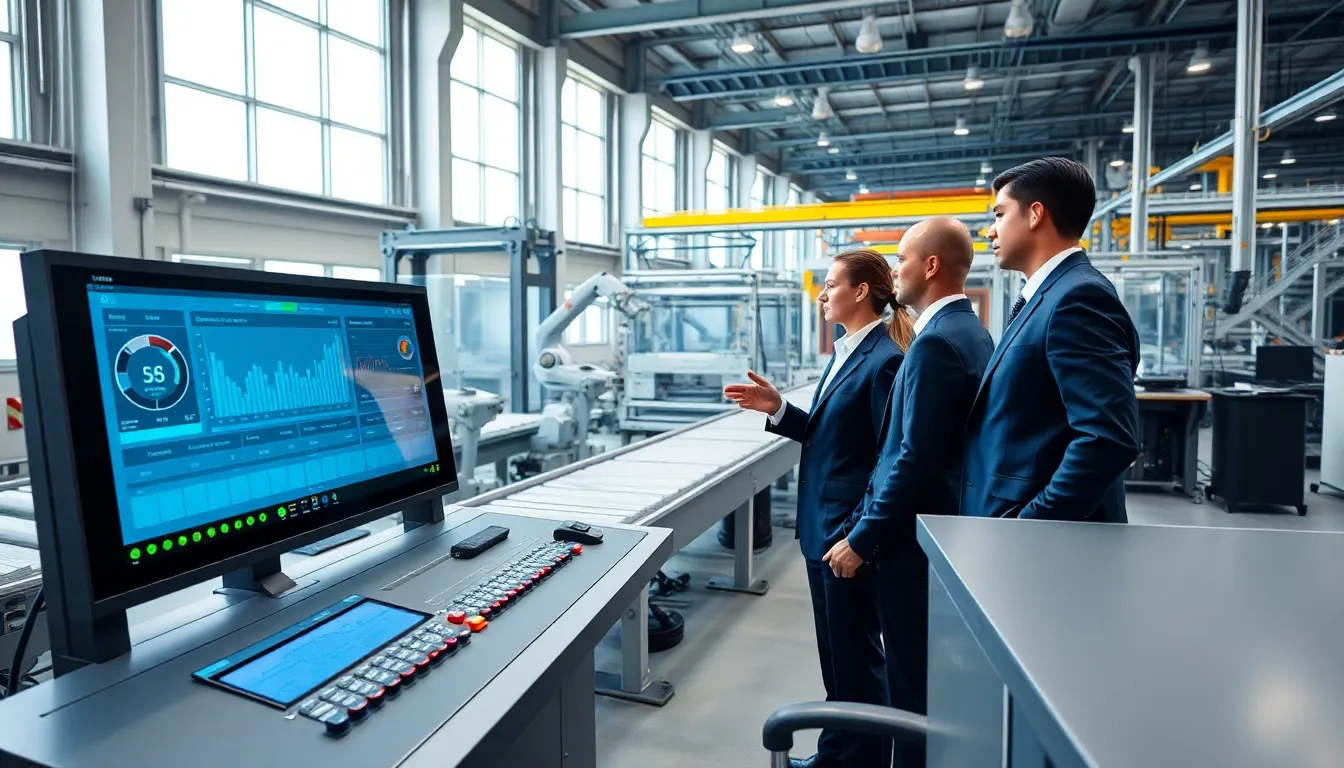Table of Contents
ToggleImagine a world where machines do the heavy lifting while humans sip coffee and strategize. Sounds like a dream? Well, that’s the power of automation control. This fascinating concept is revolutionizing industries, streamlining processes, and even making us coffee (talk about multitasking.). If you’ve ever wondered how modern technology weaves itself into our day-to-day operations, then buckle up for a thrilling journey into the world of automation control systems.
Understanding Automation Control Systems

Automation control systems are the backbone of modern industrial operations. At their core, these systems manage, command, direct, or regulate the behavior of other devices or systems. Imagine a conductor leading a symphony, ensuring each instrument plays perfectly in time. In the same way, automation control keeps all moving parts of a factory, plant, or any process working harmoniously.
These systems can be categorized into open-loop and closed-loop systems. Open-loop systems are straightforward and work on a cause-and-effect basis. For example, an irrigation system that turns on based on a timer is an open-loop control. In contrast, closed-loop systems continually monitor output and make adjustments. Think of a thermostat maintaining your ideal room temperature. If it gets too warm, the AC kicks in. This dynamic ensures optimal performance and efficiency, making closed-loop systems more prevalent in complex automation tasks.
Types of Automation Control Systems
When diving into automation control, one encounters various types of systems, each tailored to meet specific needs. These include:
- Programmable Logic Controllers (PLCs): Often regarded as the workhorses of industrial automation, PLCs are essential for controlling machinery on factory floors. Their ruggedness and adaptability make them favorites in various industries.
- Distributed Control Systems (DCS): Best suited for large-scale industrial environments, DCS allows for centralized control while enabling distributed operations across different locations. Imagine managing a massive oil refinery from one command center.
- Supervisory Control and Data Acquisition (SCADA): Predominantly used for monitoring and controlling infrastructure and facility-based processes, SCADA combines data logging with remote control capabilities. This system looks great when integrated into water treatment plants or electrical power grids.
- Human-Machine Interface (HMI): Picture yourself as the pilot of a ship, an HMI serves as the control panel where operators can interact with machines and oversee operations. This system translates data into understandable formats, facilitating decision-making.
Components of Automation Control
Each automation control system comprises critical components that ensure seamless operation. Key elements include:
- Sensors: Just like our senses alert us to changes in our environment, sensors in automation systems detect conditions such as temperature, pressure, and motion. They send this data to the control system, providing real-time feedback.
- Controllers: Think of controllers as the brains of the operation. They process input from sensors, evaluate conditions, and issue commands to actuators or other devices based on pre-set parameters.
- Actuators: Here’s where the magic happens. Actuators convert the control signals from controllers into physical action, like opening a valve or moving a robotic arm. Without them, nothing would ever change.
- Communication Networks: In a world that thrives on connections, communication networks link all components of the automation system. They ensure data flows efficiently and effectively, allowing for real-time monitoring and control.
Applications of Automation Control
The reach of automation control systems is vast, penetrating multiple sectors and elevating operational efficiency across the board. Here are a few remarkable applications:
- Manufacturing: Automated assembly lines increase production speed while reducing human error. Robotics can weld, paint, and assemble vehicles on an assembly line, ensuring consistency and minimizing labor costs.
- Food Processing: Think of how many hands touch your food before it reaches your table. Automation control streamlines processes like sorting, packaging, and even cooking, ensuring quality and safety standards are upheld.
- Energy Management: Smart grids leverage SCADA and DCS systems to monitor energy distribution efficiently. This optimized management reduces waste and lowers costs for both providers and consumers.
- Healthcare: Automation control improves patient care through automated drug dispensing systems and monitoring equipment, waiting for doctors to focus on what matters most, patient care.
Benefits of Implementing Automation Control
Implementing automation control systems offers a multitude of benefits, making them irresistible for industries looking to boost performance and efficiency. Here are some key advantages:
- Increased Efficiency: Automation speeds up processes, allowing operations to handle high volumes of production without the associated labor costs. This increase in efficiency translates directly into higher profit margins.
- Consistency and Quality: Machines don’t tire or lose focus. Automation control ensures that processes remain consistent, leading to higher-quality products and reduced error rates.
- Enhanced Safety: Reducing human involvement in hazardous conditions can drastically lower workplace accidents. Automated systems handle dangerous tasks, providing a safer environment for workers.
- Real-Time Monitoring: Constant feedback from sensors allows for proactive decision-making, minimizing downtime and optimizing performance. Operators can detect issues before they become significant problems.
Challenges in Automation Control Implementation
While the benefits are significant, industries face challenges in implementing automation control systems. Keeping these challenges in mind can pave the way for smoother transitions:
- High Initial Costs: The upfront investment in automation technology can be daunting. Organizations must weigh these costs against projected savings in the long run.
- Resistance to Change: Employees may fear job loss or struggle to adapt to new technologies. Providing thorough training and clear communication will foster a culture of acceptance.
- Integration Issues: New systems need to integrate seamlessly with existing infrastructure. Without robust planning, companies can encounter data transfer hiccups or compatibility problems.
The Future of Automation Control
The future of automation control holds exciting possibilities. Advancements in artificial intelligence (AI) and machine learning will lead to more intelligent systems capable of self-optimization. Imagine machines that not only perform tasks but also learn and adapt over time.
Also, the Internet of Things (IoT) will further connect automation systems, enabling real-time data sharing across platforms and industries. This interconnectedness will enhance efficiency, allowing businesses to respond quickly to market changes. As industries continue to evolve, the blend of human expertise and automation technologies will streamline operations and open new avenues.







